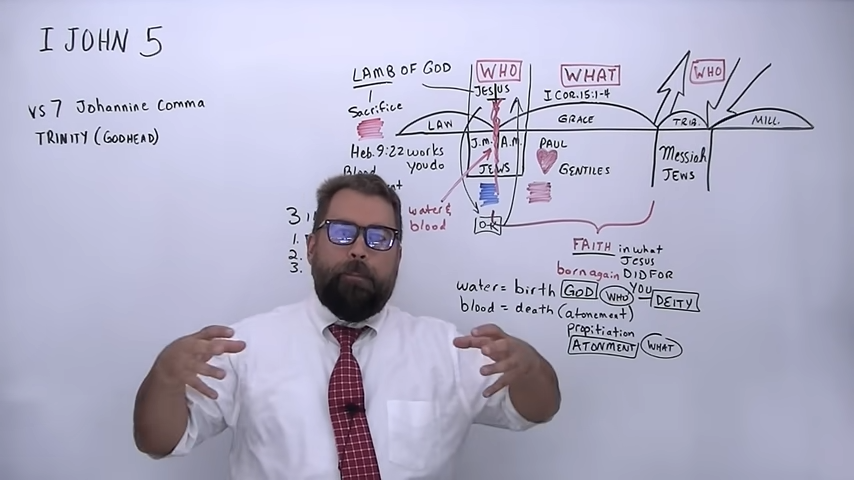Insights
Biblical Interpretation and Textual Analysis
🐑 John refers to Jesus as the “lamb of God,” symbolizing the sacrifice for the forgiveness of sins, highlighting the importance of blood atonement in the Old Testament.
💧 The mention of water and blood in 1 John 5:6 may be referring to the crucifixion of Jesus, where water and blood came out when his side was pierced.
🤯 God can divide Himself up and be in three different places at once, which is amazing and beyond human capability.
🙏 The speaker defends the belief in the Trinity, stating that while it is one God in three persons, it does not mean there are three different gods, but rather that God can be present in three different places at once.
📚 The existence of quotes from church fathers referencing 1 John 5:7 suggests that the verse was present in the originals, contradicting the argument that it was a later addition.
📚 The King James Bible includes verse 7 of 1 John 5 because it is supported by witnesses from 100-300 years after Jesus, and its absence in newer versions is due to reliance on corrupted Gnostic texts.
🙏 The presence of the Holy Spirit within us is a wonderful and powerful aspect of being saved.
Salvation and Faith
💔 Salvation is not achieved through works or personal actions, but through faith in what Jesus did for us.
💪 Believing that Jesus is the Son of God is the key to overcoming the world and receiving salvation.
⚰️ The concept of eternal life in 1 John is closely tied to the idea of resurrection, highlighting the importance of Jesus’ resurrection in Christian belief.
🩸 When we are saved, our soul is washed in the blood of Jesus Christ.
Summary
TLDR: The key idea of the video is that understanding dispensations, the rejection of Jesus by the Jews, and the importance of trusting in Jesus and his sacrifice for salvation are central to the doctrine of the Trinity and the belief in salvation through faith alone.
- 📖 Understanding dispensations and the rejection of Jesus by the Jews led to salvation through faith alone, not water baptism, and the importance of trusting in Jesus and his sacrifice for salvation.
- 📖 Jesus came into the world through birth and death, with the water representing his birth and the blood representing his atonement and death for our sins, aligning with the teachings of Paul and John.
- 📚 The speaker discusses the double application of 1 John, disagrees with the exclusion of verse 7, and argues for the grammatical correctness of the Trinity concept in the original Greek language.
- 📚 The speaker discusses the doctrine of the Trinity, refuting claims that it was invented by Catholics and suggesting that those who oppose it may be influenced by demonic spirits.
- 📚 The controversy surrounding the Trinity is addressed, with the speaker asserting that it is a biblical concept and using examples from the Bible to support the belief in one God manifesting in three different places.
- 📚 The controversy surrounding 1 John 5:7 in the Bible, its removal from the Greek text, and the evidence supporting its existence.
- 📜 The speaker discusses the importance of 1 John 5:7 in affirming the doctrine of the Trinity and warns against the deception of using altered Gnostic texts, emphasizing the cleansing power of Jesus’ blood.
- 📖 The Bible teaches that humans are triune beings, with the holy spirit dwelling within them when they are saved, and the blood of Jesus Christ washes away sins and saves the soul, emphasizing the importance of listening to God’s truth and avoiding those who teach against the doctrine of the trinity.


